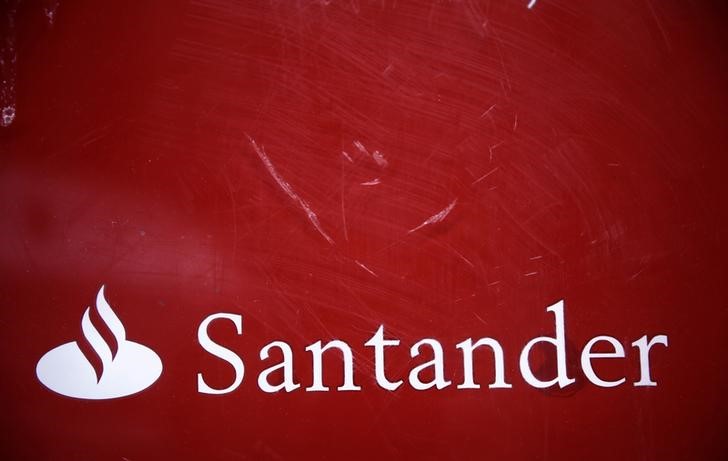By Sarah White and Jesús Aguado
MADRID (Reuters) - The drop in the Brazilian real and other Latin American currencies weighed on Santander's (MC:SAN) third-quarter earnings which it reported on Thursday, highlighting potential pitfalls ahead for the euro zone's biggest bank as it aims to increase returns.
Income from other key markets, including the United Kingdom, helped Santander counter the currency hit to an extent, and group net profit rose nearly 5 percent on the same period last year, though it fell quarter-on-quarter.
Santander relies on Brazil for about a fifth of its earnings, but the country's economy has slumped into its worst recession in nearly three decades.
Once Santander's biggest earnings motor, which helped it withstand a severe downturn in its Spanish home market, Brazil's contribution to the bank's profits has dropped below that of its UK business.
Net profit from the country fell nearly 15 percent from the second quarter to the third, though without taking into account currency fluctuations it would have fallen by a more moderate 1.4 percent, Santander said.
Soured debts in Brazil as a percentage of total credit continued to rise from June to September, to 5.3 percent, though at a slower pace than a quarter earlier.
Worries about Brazil come as Santander's executive chairwoman Ana Botin is looking to bolster profits and returns at Santander over the next three years, as well as lift dividend payouts, based on a strategy of lending more and winning over clients.
The bank's shares have fallen around 18 percent since the start of the third quarter in July, underperforming rival BBVA (MC:BBVA) which relies more on Mexico for its Latin American income and which registered a 7 percent share price drop in that period. BBVA reports third-quarter results on Friday.
Santander's shares were down 1.7 percent to 5.1 euros in early trading on Thursday, underperforming the European banks index (SX7P).
CAPITAL IN FOCUS
Botin aims to get Santander's return on tangible equity, a measure of profitability, up to 13 percent by 2018. It slipped from 11.4 percent to 11.3 percent in the third quarter.
"We are confident that our model will help us to reach the targets we have set," Botin said in a statement, adding the economic backdrop in most of Santander's markets was expected to improve.
The bank is also seeking to increase its capital levels without calling on shareholders. Its core capital adequacy ratio under the strictest "fully-loaded" criteria rose to 9.85 percent of risk-adjusted assets by the end of September from 9.83 percent in June, though that still falls short of many European peers and the bank's 11 percent target for 2018.
"Capital was a disappointment," Deutsche Bank (DE:DBKGn) analyst Raoul Leonard said in a note to clients.
Overall at the group, net profit was in line with forecasts, coming in at 1.7 billion euros (£1.22 billion) in the July-September period. That was higher than a year ago, though net profit was down 1.7 percent from the April-June quarter.
The bank's net interest income (NII), or earnings on loans minus deposit costs, stood at 8 billion euros, nearly 7 percent up from a year earlier, though it fell by close to 4 percent from the second quarter of 2015.

Strong competition to lend in Santander's Spanish home has eaten into margins - a trend noted by rivals - and even in its UK unit, now the bank's biggest contributor to profits, combined earnings from fees and NII were down slightly quarter on quarter.